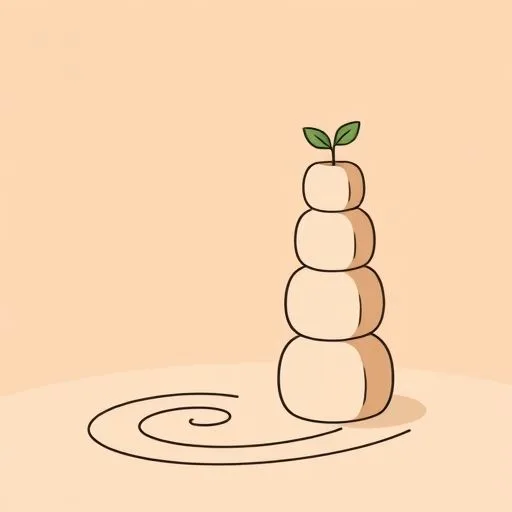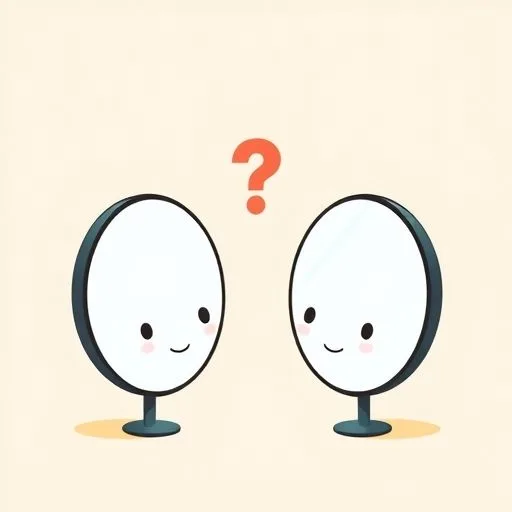
You’ve been there too. Halfway through dinner prep, your little one tugs your sleeve like an explorer discovering land. ‘Why do clouds cry?’ And in that moment—when you’re bone-tired and just want quiet—they hand you this spark. But we crush it sometimes. Not on purpose. We think, ‘They need structure!’ or ‘Just finish your peas!’ That tiny sigh they give when curiosity gets cut off? That’s the sound of a light dimming. I’ve learned: it’s not about managing their questions. It’s about nurturing kids’ natural curiosity while they’re still brave enough to ask.
Growth isn’t a straight staircase—it’s a messy spiral

We set up these invisible staircases in our heads, right? Stack skill on skill: count to five, then tie shoes, then read. But kids? They dance along a spiral. Today they’ll name every dinosaur at lightning speed. Tomorrow they melt down because socks don’t feel ‘right’. And next week? They dump sandcastles shouting ‘EXPERIMENT!’. That’s not regression. That’s how they map reality—brick by messy brick.
Here’s what I watch: When blocks tumble, my kid doesn’t see failure. She sees ‘what if I try again?’. So why do we rush them toward the next step? Real learning lives in the wiggle room—where paint smears on the table and ‘why does poop stink?’ gets a serious science debate.
Sometimes the messiest play is where the real learning happens.
Our job isn’t to straighten the spiral. It’s to stand guard while they spin.
When ‘easy’ feels like climbing Everest

You know that thing adults call ‘simple’? Like saying ‘I’m angry’? For kids, it’s scaling a mountain. But we keep forgetting: emotions don’t fit on flashcards. Last Tuesday, my partner watched our son wrestle his shoe straps for twenty minutes while he whispered ‘help me… no, I do it’. We almost stepped in. Then we saw it: That wasn’t stubbornness. It was him figuring out his own bravery.
Here’s the shift that changed us: We stopped measuring their ‘easy’ against our checklist. Now when they struggle, I notice the tiny victories they don’t see—how they breathe before trying again, how they peek for reassurance. Ever notice how kids find joy in the simplest things adults overlook? Like tracing raindrops on windows instead of rushing inside.
It taught me: honoring their pace isn’t leniency. It’s how we protect their natural curiosity. Because that quiet moment before they ask ‘why’ again? That’s when they’re gathering strength.
When they echo you—it’s not mimicry, it’s meaning

That moment your kid parrots ‘we’re almost there!’ for the tenth time while you’re stuck in traffic? We’ve all bit our tongues not to say ‘I know!’. But listen closer. When they repeat us, they’re not copying—they’re digging. Last week, my daughter yelled ‘MINE!’ after snatching a toy. Then she paused. ‘But… share?’ she asked like it was a riddle. Not ‘I need to do better’. ‘How does sharing work?’
We used to think repetition meant they ‘got it’. Now I see: It’s how they test understanding. Like when my kid imitates my ‘good morning’ voice but adds ‘why sun wake up too?’. That’s not cute noise—it’s critical thinking in toddler dialect. How do you handle it when your kid wants to do the same thing over and over?
I’ve learned to toss back ‘what happens next?’ instead of answers. And that’s how those endless repetitions build something incredible! Their echo turns into exploration. And honestly? It’s okay if learning looks like play. Actually, it’s better that way. Because in their repetition, they’re building resilience—one ‘why’ at a time.
Source: The Four Fallacies of Modern AI, Blog Apiad Net, 2025/09/11 02:26:16
